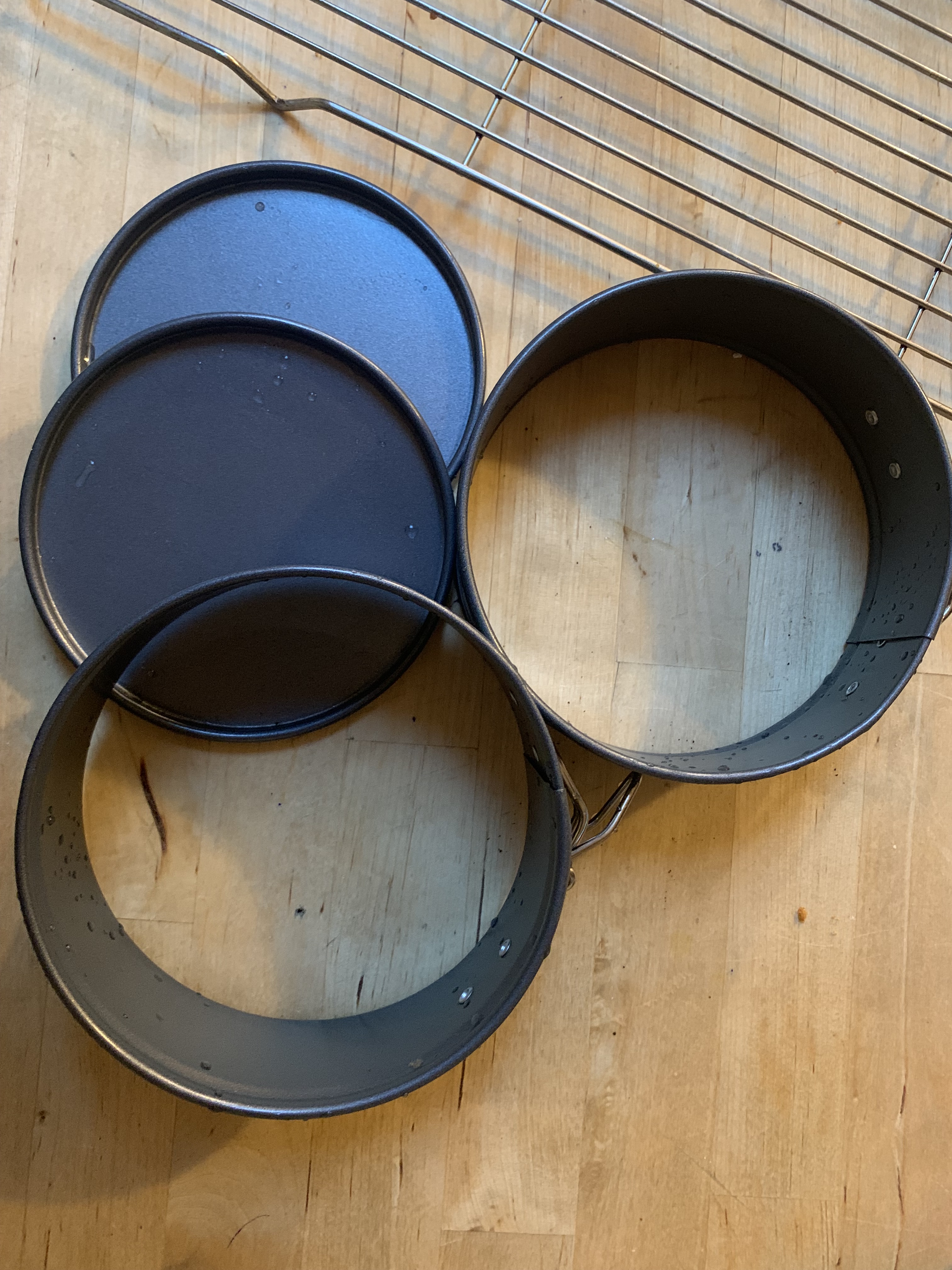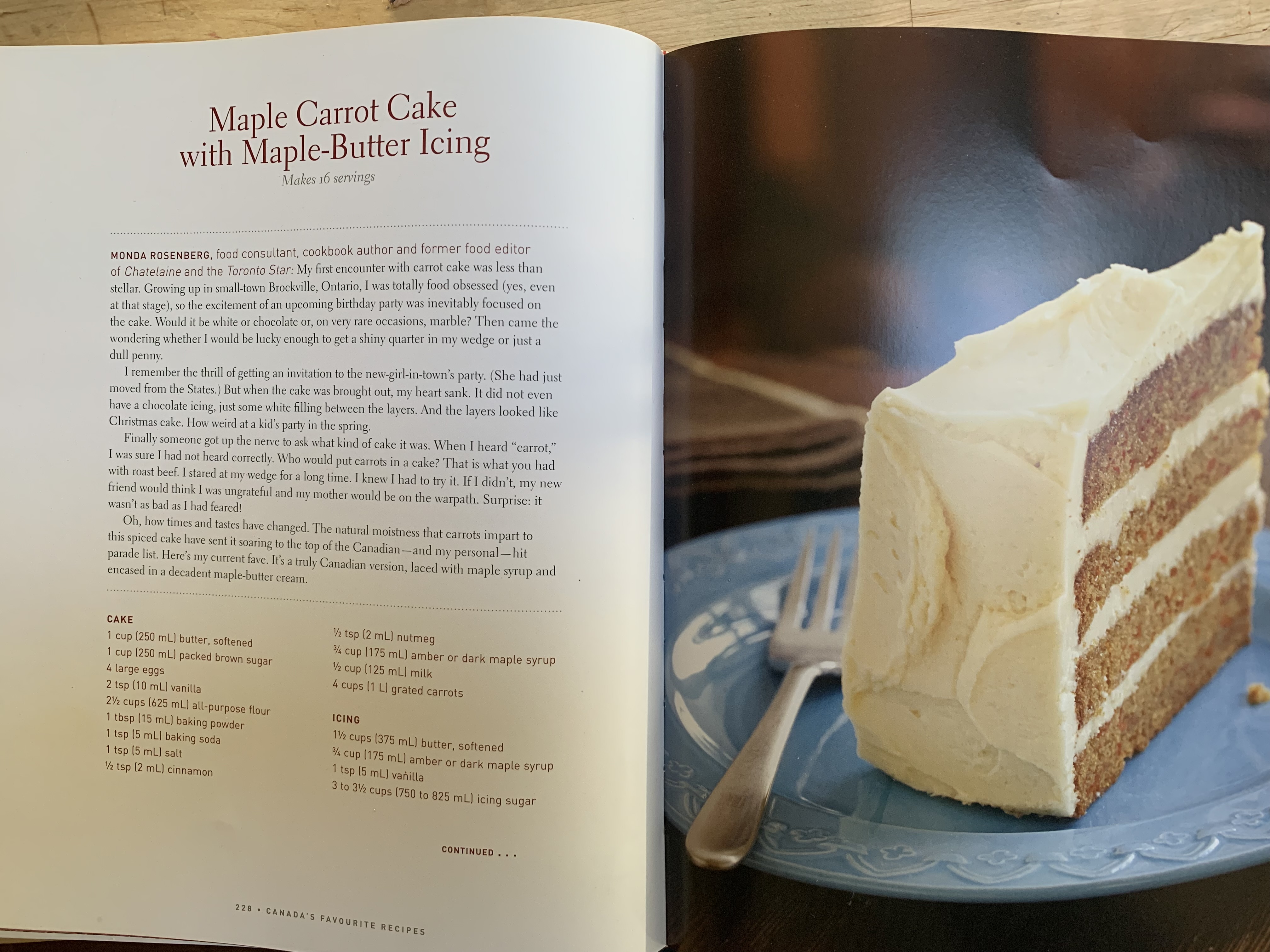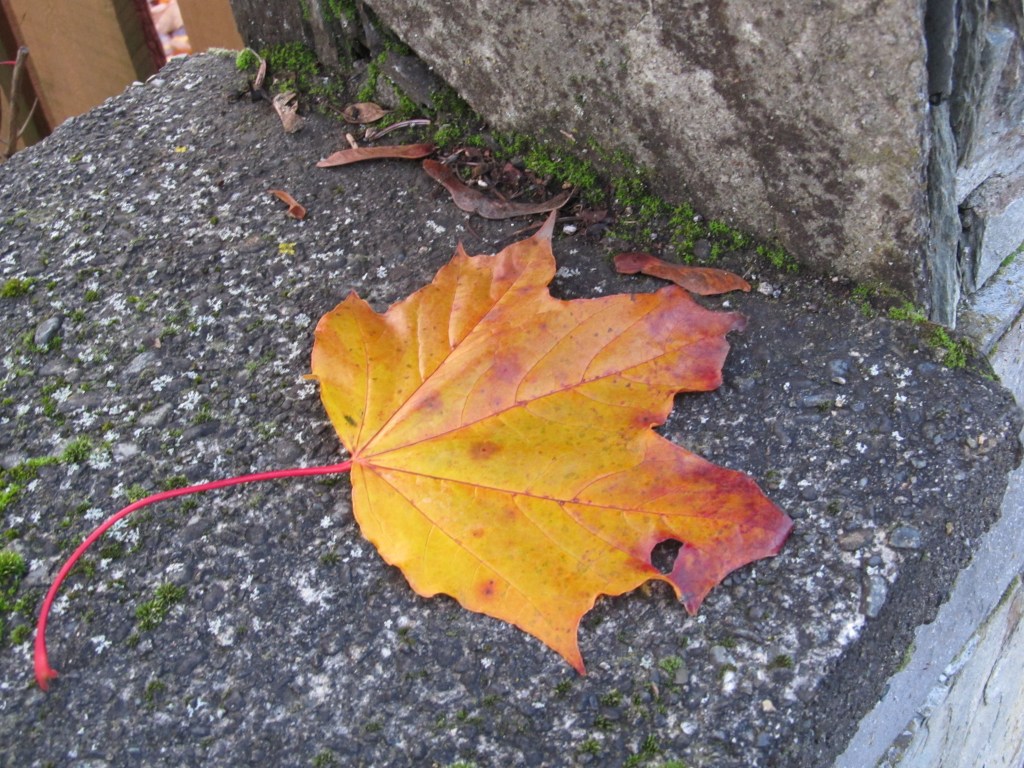Sometimes I get a couple of hours, sometimes a whole morning when luminous joy bubbles into life, oxygenating a flat week. Savour the perfection—then *pop* it’s gone. Lately, when I experience these rapturous periods, I am intensely aware of time fleeting, of the unreliability of “happiness,” of my inability to “keep” the moments, of my impotence in the face of life.
September 28 is a good day for birthdays. Two of my friends and our puppy were born on that day. Leading up to Tuesday, I was thinking about cake, how I love making, giving, and eating cake for birthdays and other occasions. But there is always the problem of excess. Do other cake bakers and eaters have the same problem? If there’s a big (9-inch) cake in the house—do you eat a slice every day for a week and gain five pounds? Or do you obsess over it, polishing it off in two or three days and feel sick? Or does it go into the compost because you can’t eat it all? Whichever scenario fits, the solution is the same: bake a small cake. Because small is practical and beautiful.
One day a couple of weeks ago, Michael and I headed to a kitchenware store, and I bought two sturdy 4.5-inch springform pans. I found a good recipe for carrot cake in Canada’s Favourite Recipes by Murray & Baird and halved the recipe. I wasn’t sure what it would yield; it turned out the batter filled the two small cake pans and three cupcake liners.



I sliced the two cakes horizontally to fill them, then frosted both cakes and cupcakes with maple butter frosting. I put the better-looking cake and the cupcakes aside for my friends, and Michael and I “tested” the other cake, eating one slice each for three nights. I know, I should have given both cakes as gifts, but I had to test cake production. Six tiny, perfect slices of carrot cake, sweet and moist. Who needs more than a few bites of something delicious?

Then I assembled the birthday packages. I save good boxes, so I had two shoe boxes at hand made of strong cardboard. I lined each with purple tissue paper, then went out to the garden to pick posies. Fragrant thyme, rosemary, and lavender mixed with pink, red, and purple blooms, tied with a ribbon. I put the cupcakes in a plastic container and the cake on a round of cardboard cut from an old box and covered with foil. Cakes nestled in their boxes, I added the bouquets, a small box of Eddy matches, a candle on the cake, and loose candles for the cupcakes. I closed the lids, then taped birthday cards on the box tops.
On Tuesday morning, we fussed over birthday puppy Marvin with a new toy and some treats. Then, enjoying one of the perks of self-employment, I took off for an hour. After placing the birthday boxes in the front seat of the car, I drove along Craigflower to Vic West, listening to NPR’s jazz and blues station, window open to the breeze. The splendid fall day sparkled. Coppery leaves fell slowly from the trees, and the clear, cool, blue sky made me feel lighthearted. I parked and walked box #1 up to my friend’s townhouse door and placed it there. Then Google maps told me my other friend lived only 150 meters away. I knew they shared a neighbourhood, but I had no idea they were so close.

So rather than drive, I walked the other box through a children’s playground to my friend’s house, feeling so happy I could burst. And yet, the day before I was swimming in sadness about every little thing. I placed box #2 on the doorstep and walked back to my car, humming a song, alive to the crackling beauty of early autumn, favourite season.
You can’t have your cake and eat it too. I’d been thinking about that proverb and how it didn’t make any sense. Turns out Ursula Le Guin agrees with me. In 2010, 81-year-old Le Guin (1929–2018) started a blog and wrote delightful posts for seven years. Houghton Mifflin Harcourt published the collected blogposts as No Time to Spare: Thinking About What Matters (2017), which I recently finished. Many of the posts are about her cat, Pard, good reading for cat lovers:
https://www.ursulakleguin.com/blog.
One thing that mattered to Le Guin was figuring out weird language puzzles, including the annoying cake proverb. Of course if you have a cake you’re going to eat it! Le Guin wonders in her post about the logic of this proverb, but then it dawns on her that the verb “to have” has several meanings—a less common one is “to keep.” The order of the proverb also seems awry, so, she revises it, reversing the order and using “keep” instead of “have.” And suddenly it makes sense:
You can’t eat your cake and keep it too. You can’t have it both ways—eating and keeping.
When I got thank-you texts and emails later in the day from my friends, one of them ended her message saying she hoped we could get together more often in the coming year. I had acknowledged in my card that we had hardly seen each other lately, what with the pandemic and both of us being introverts. Her final line was, “nothing is forever.” I paused. Of course.
I can’t count on that fickle flicker that moves me to make cakes, write, sew, create. It comes, it goes, I can’t keep it, I can’t summon it. The work wants to be made, and the work—not you—chooses when and how. As I head for 63, I am keenly aware of energy slowly flagging, of a narrowing in my interests and available time, of the limits to life. All the more reason to relish eating the cake when it appears on a plate in front of you. Don’t even try to keep it.




